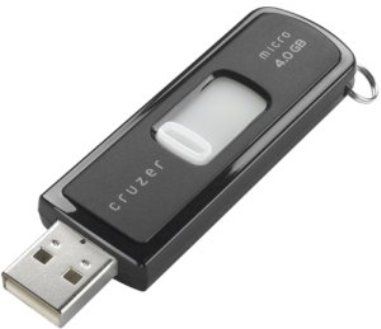
Twitter! What is it? How do I use it? Why is it so popular? Are there downsides? How have other people used it?
All these questions answered in today's post about this popular social internet service.
WHAT IS IT?
Let's go to the basics of Twitter. Like perhaps.. an evolution of Twitter.
First, there were blogs. Blogs, like this one, are articles posted online about a specific topic.
Meanwhile, text messaging technology was becoming more widespread. Text messaging is when you use your phone to type out little messages which you can send to another person's phone. They usually have to be 140 characters or less. Today, text messaging is huge. It is used by business men and obnoxious teenagers alike. It's a massive industry and people text message to vote for American Idol or to succinctly, briefly communicate with friends.
Then... two two technologies collided. Behold! Twitter is born! To use Twitter is to create your own blog that is updated via text messages sent from your phone. Each blog post is very brief- 140 characters or less. Because Twitter only works through your phone, you can update your blog at anytime! You can update it from work, or at a convention, or during a Congressional session! Hallelujah.
HOW DO I USE IT?
Step One: http://twitter.com/
Step Two: Create free account.
Step Three: Activate phone. Send a text message to the number they give you for your account- this updating is also known as "tweeting." Voila!
Optional step four: Check your cell phone service provider to make sure you have a good text messaging plan in place. If not, you may be paying 25 cents per text message.
WHY IS IT SO POPULAR?
It's a very hip way to stay relevant. As technology expands, mass exposure becomes easier and faster every day. As citizens become overloaded with things clamoring for their attention, short easy-to-read articles become popular. The shorter the better, sometimes, and Twitter is the next step for this new, attention-deficit way of communication. Tweets are only 140 characters! They lend themselves to witticisms! They are updated from your cell phone! You can update from any place at any time! There are thousands and thousands of twitter accounts, and some of them are written by famous people, some are written by witty people, and most are written by people hoping to be witty AND famous.
ARE THERE DOWNSIDES?
Well, yes. Your average person is boring to read. Do you really want to read that your neighbor "really wants coffee and is excited for Panera bagels"? Do you really want to tell the world that your daughter has "the worst diaper rash ever"? Uh, no, LAME and GROSS and DOES NOT RESPECT A NEED FOR PRIVACY. Seriously people, some things are better kept to yourself. Like your current location, opinions of people, and state of personal hygiene. The lines are becoming blurred as people seek attention and popularity, though, and often the results lack taste and class. However, this application is available to anyone, and dull people are everywhere. Now, they can bore the world for free.
Also, tweeting about current events as they happen is a popular twitter pursuit. However, current events seen through one person's eyes are skewed and unreliable. There's no screening process for the individual, no oversight or fact-checking, and individuals by nature lack the ability to zoom out and see the big picture. Plus, one-line tweets trivialize and bias events for the sake of brevity.
My final criticism is that Twitter-ing can be like passing notes in class. Tweets can be so dumb! It seems like a great way to stay relevant, but it can be a distraction and a time-waster. Celebrities are now using twitter as thinly-disguised promotional tools, which is a very non-creative use of a potentially very creative medium.
HOW DO PEOPLE MAKE TWITTER WORK FOR THEM?
For all its downsides, Twitter has some really innovative uses. The potential for humor is endless- brevity is the soul of wit, after all. DarthVader is a popular, very funny Twitter feed.

Celebrities often use Twitter for a variety of purposes as well. Shaq has a fun twitter feed that he uses to give away tickets when he visits new cities. He also uses Twitter to connects to fans. Other celebrities are not so much fun. Britney Spears' Twitter feed, predictably, sucks. Recent tweet: Went shopping in Coral Gables, bought some purses and sunglasses! - Britney.
On a more serious note, Twitter is an excellent way to communicate during disasters and emergencies. Phone lines often become clogged, and a simple "I am alive, I am OK" will do wonders for the blood pressures of loved ones. Recent disasters where Twitter has been successfully used: the Virginia Tech shooting, the 2007 fires in California, the 2008 Mumbai terrorist attacks and the Hudson River emergency plane landing in 2009. Twitter is an excellent way to distribute authoritative information to people quickly, as utilized by the Australian County Fire Authority in February, 2009 and again by the Red Cross during the Fargo, North Dakota flooding in March 2009. (links lead to relevant Twitter feeds.)
The site Twitetterholic.com is a great site that shows the top-followed Twitter feeds. It also shows trends in the readership of each feed. The top ten is a mix of news feeds (for example, CNN's Breaking News), famous celebrities and The President of the United States (http://twitter.com/BarackObama).
Now that you know how to use Twitter, you can be a fully-functioning member of pop culture again. However, be warned: the line between using Twitter and being a twat is a thin one indeed. Please folks, use Twitter judiciously. Don't be another Britney Spears.







